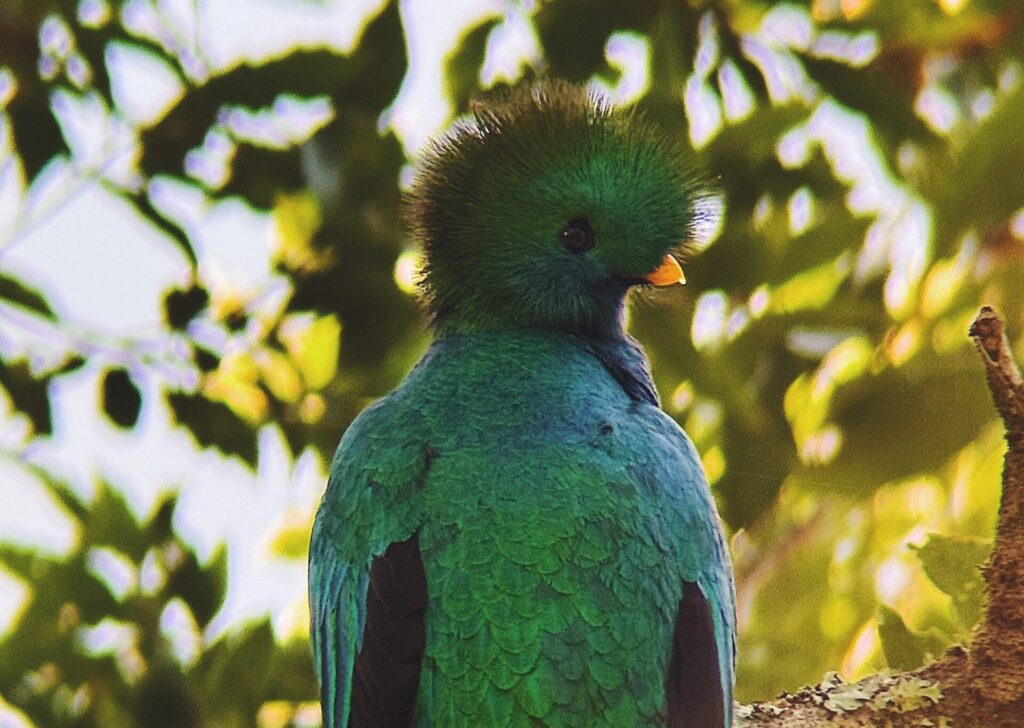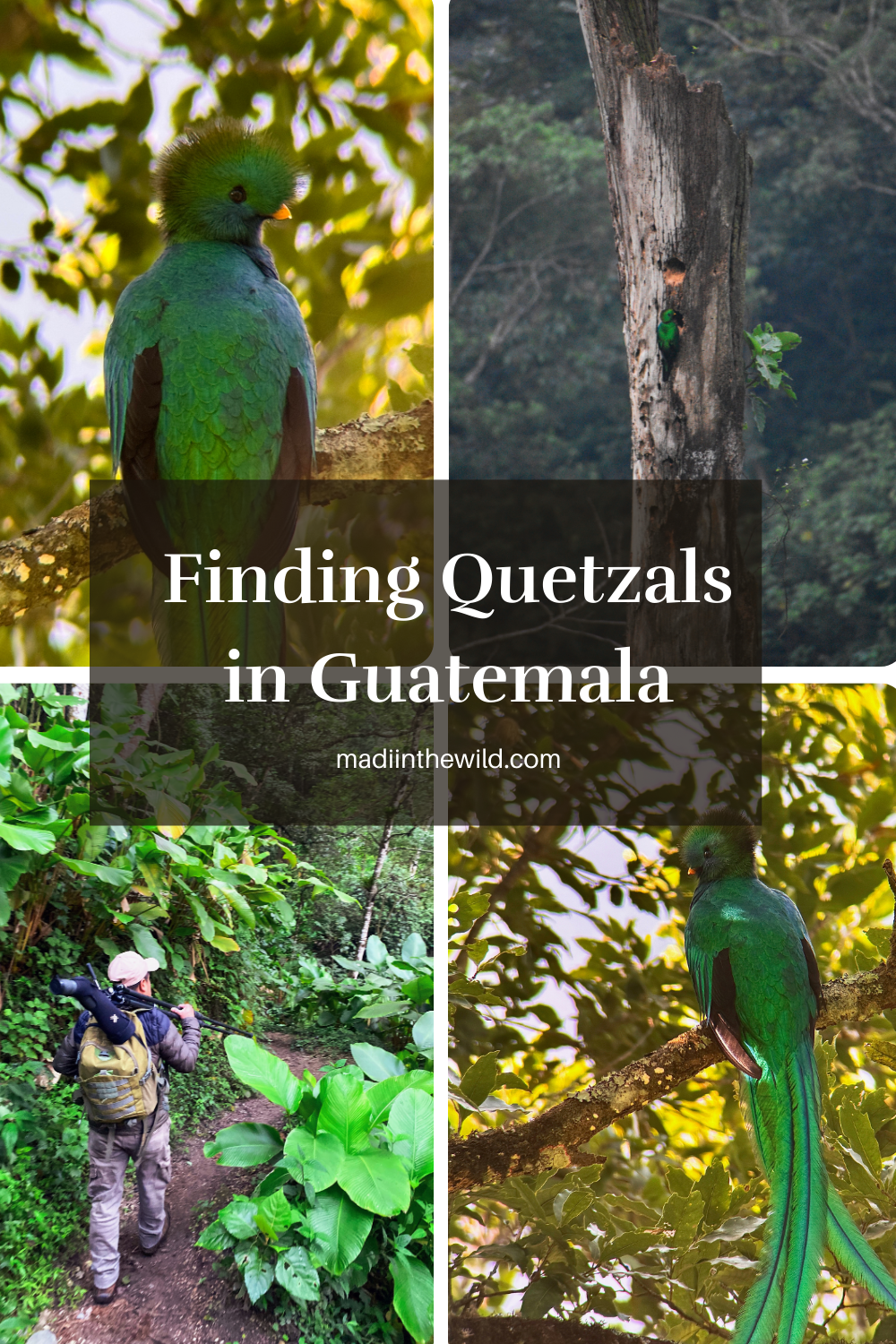
With the sky still dark, I followed the flickering lights of a rickety old truck parked outside my accommodation. The side of the car read “Birding Trips – Quetzal.” Perfect! I’m off to a great start. The truck looked like a budget safari ride. Metal poles jutting from the bed, more Mad Max than National Geographic. I climbed in, trying to ignore the slightly terrifying vibe, thankful for my tetanus shot, and hopeful for the journey ahead. The goal? Finding quetzals in Guatemala.
Procrastination Leads to Finding Quetzals in Guatemala
This entire adventure started as a random fixation while I was procrastinating at a coffee shop in Colorado. I was trying to devise a reason to justify a spontaneous trip to Guatemala that made zero financial sense but felt necessary. And then it hit me: “I’ve never seen a Resplendent Quetzal before!”. That was all the justification I needed for finding quetzals in Guatemala.
For years, I had dreamed of seeing this elusive bird. Its vibrant feathers have captivated ornithologists and the indigenous Maya people. Since the bird has never survived captivity, they believe the quetzal’s feathers symbolize freedom.
While the IUCN lists the quetzal as “Near Threatened” globally, it is locally endangered in several parts of Central America, particularly where cloud forests have been heavily deforested. Having spent several months in Costa Rica working on conservation efforts for Quetzals, I became personally invested in their plight. I had even planted avocado trees, a quetzal’s favorite food, creating biological corridors in Costa Rica.
Despite all that work, I had never seen one in the wild. So, with nostalgia for my time spent in Costa Rica, and the excuse I’d been waiting for, I booked a flight to Guatemala the next day!
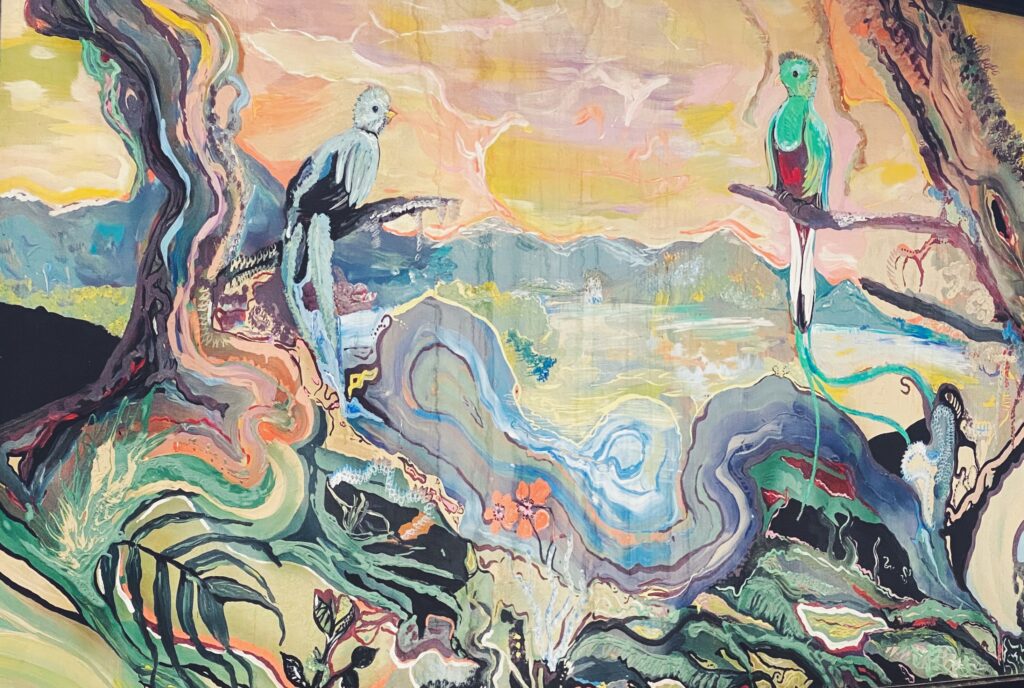
Birding Preparation
I spent two weeks backpacking solo in Guatemala, but my original route didn’t align with my mission to see a quetzal. My itinerary didn’t bring me near the cloud forests of the Sierra de las Minas Biosphere Reserve or the Biotopo del Quetzal (Biotopo Mario Dary Rivera), the two best places to spot the bird in Guatemala. Slightly deterred, I adjusted my route from Antigua to Lake Atitlán.
Lake Atitlán is a choose-your-own-adventure place: family-friendly resorts, hidden gems, and plenty of backpacker hotspots. Naturally, I planned to stick to the backpacker-friendly areas around the lake, where I’d hopefully make friends and feel as safe as possible. I was about ready to give up on the quetzal mission entirely. Thinking my bird-watching dreams were over, I learned about a potential quetzal hotspot: the Mirador Rey Tepepul Reserva Natural of Santiago Atitlán. The catch? It was in a non-touristy area, a 30-minute boat ride from the hostel where I was staying.
Deciding it was worth the journey, I scrambled to assemble the final steps to reach the quetzals.
3 Remaining Steps to Finding Quetzals
- Book random lodging in the mystery town I just heard of. There wasn’t much lodging in the area since it wasn’t a touristy spot. I managed to find a large house that rents out a room for just $10 a night. A great deal, but it felt a little off. It was quiet, almost like a ghost town, and there wasn’t a lock on the door. The locals were super friendly, so I ignored my discomfort (don’t be like me).
- Find a place to store my luggage. The hostel on my current island swore to protect it. (flashforward-they did). Easy!
- Figure out how to get to the other island. At this point, I was ready to swim! Thankfully, they have ferries. I learned there was a small port on the other side of the island called the Santiago Dock. These boats could take people to the less touristy areas, including the Municipal Ecological Park of Santiago Atitlán.
While the hostel crowd geared up for a lake yacht party (cue Rihanna’s greatest hits), I packed my camera and leftover fried rice. I set off in the opposite direction, towards nature, jungle, and, hopefully, Quetzals!
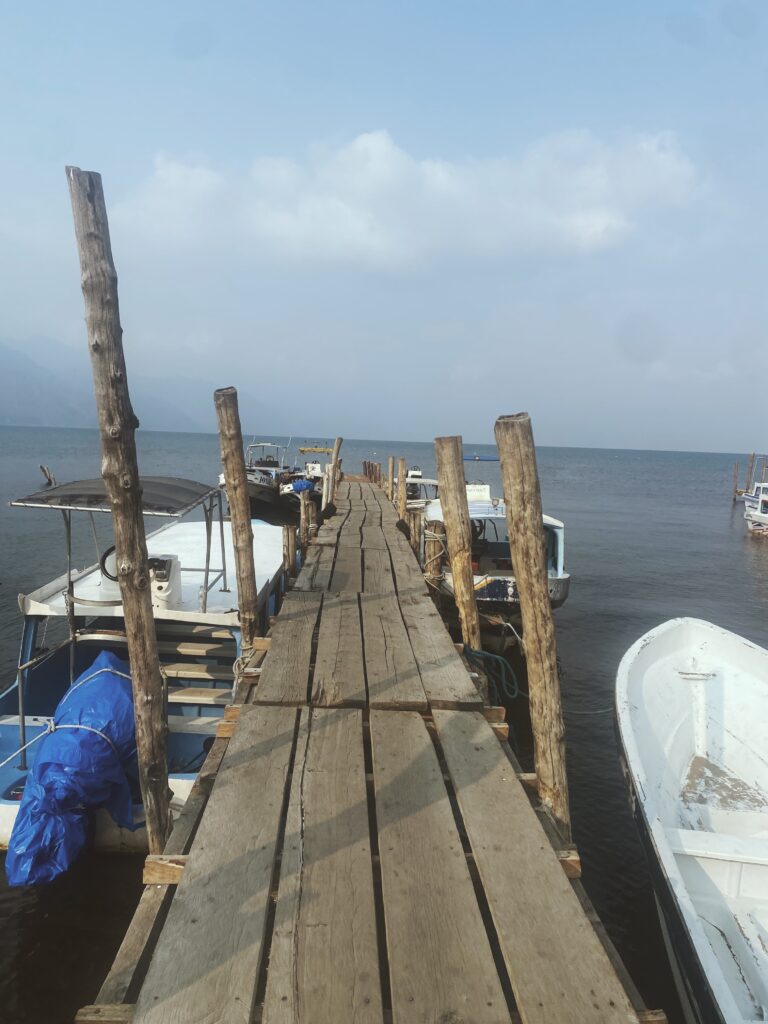
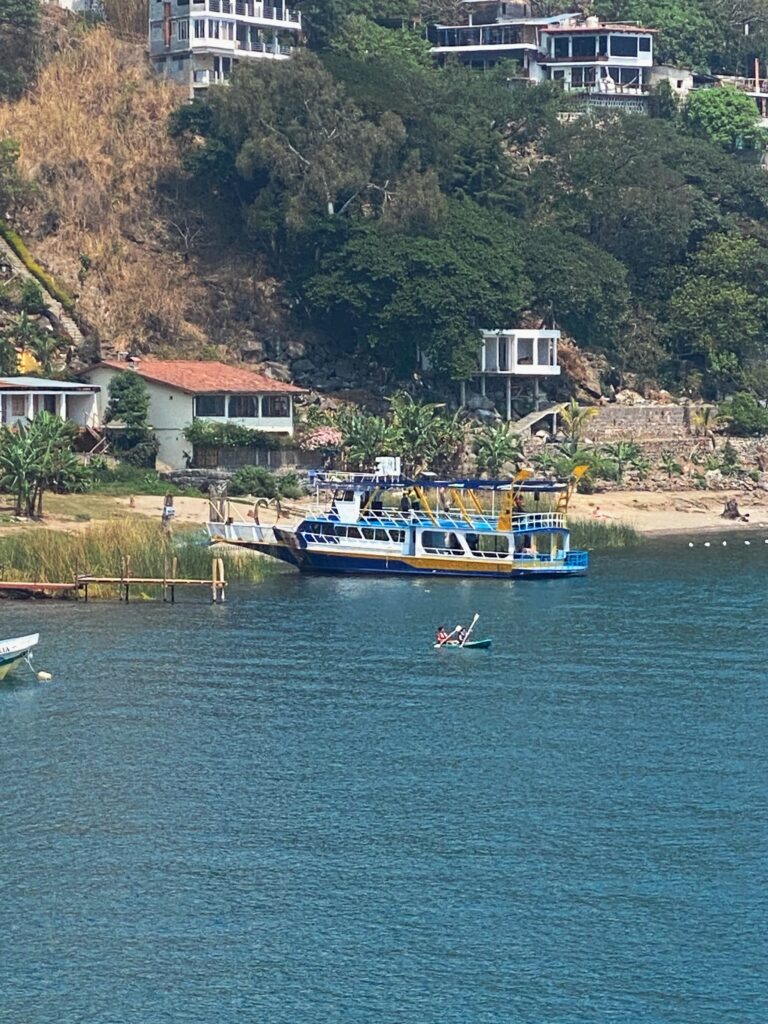
Across the Lake and Into the Wild
When we arrived at the port, almost no one was there except three Dutch tourists and three local men heading back to their hometown. We all sat quietly as the boat headed toward the lake’s Quetzal hub: Santiago.
As the boat docked in Santiago, we all headed our separate ways. Santiago felt off the beaten path with locals weaving through the streets, fresh fruit stands on every corner, and not a tuk-tuk driver in sight trying to sell me a volcano tour. It was quieter in a comforting way. With my screenshot of the town map, I headed toward my lodging and settled in for the night in preparation for the early morning birding excursion.
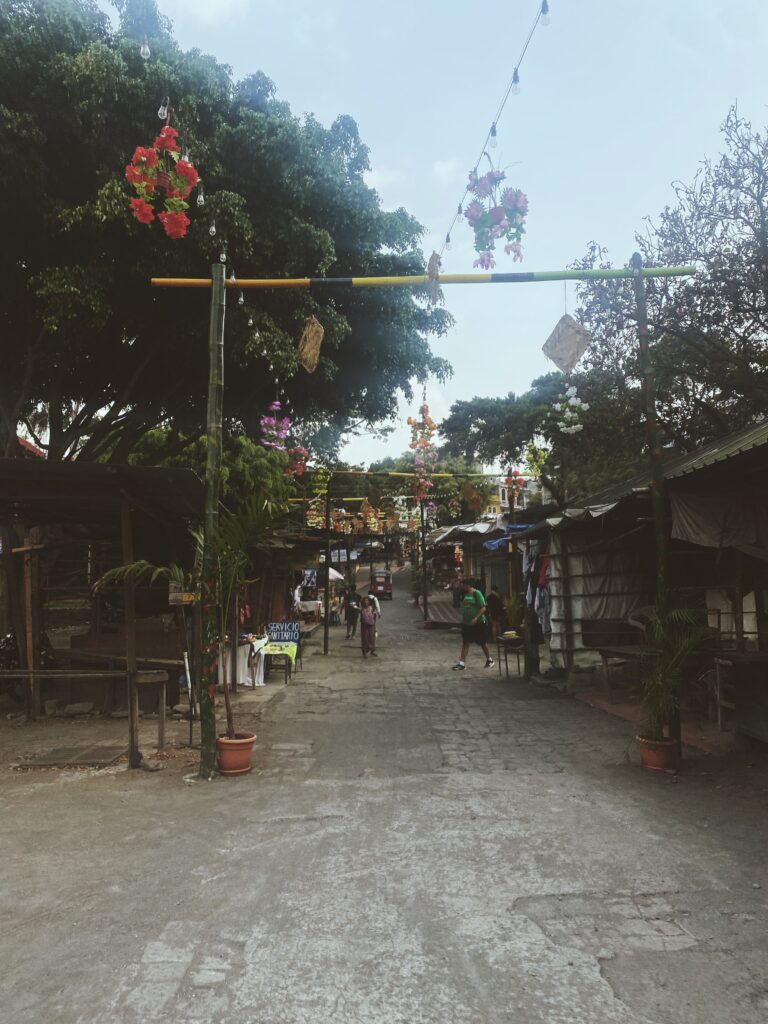

Journey to the Trailhead
The morning arrived, and after hopping into the truck, the birding expedition began. As we veered off the main road and headed toward the trail, our guide, Rolando, told us about the Mirador Rey Tepepul Reserve, a lesser-known nature gem tucked high in the hills above Santiago. It’s part of the same misty cloud forest network that Quetzals called home. Unlike more developed parks, this one still feels like a wild place. No paved walkways, no snack shacks. Just you, the trees, and a crew of birding experts. Fewer tourists, more nature, and a better shot at spotting the rare species.
About ten minutes into the drive, we made an unexpected pit stop in front of an upscale lodge. I was a little confused. There was zero forest in sight, and a very concerning thought that I’d been kidnapped via birding lies. But then, out strolled the three Dutch tourists from yesterday’s boat ride, now suited up in full birding attire and looking like they’d trained their whole lives for this moment. We had a full crew of unexpected birders, ready to track down Guatemala’s feathery icon.
The truck restarted and climbed higher over the next 30 minutes, weaving through cool mist and thickening trees as we gained elevation. Finally, we arrived at the trailhead.
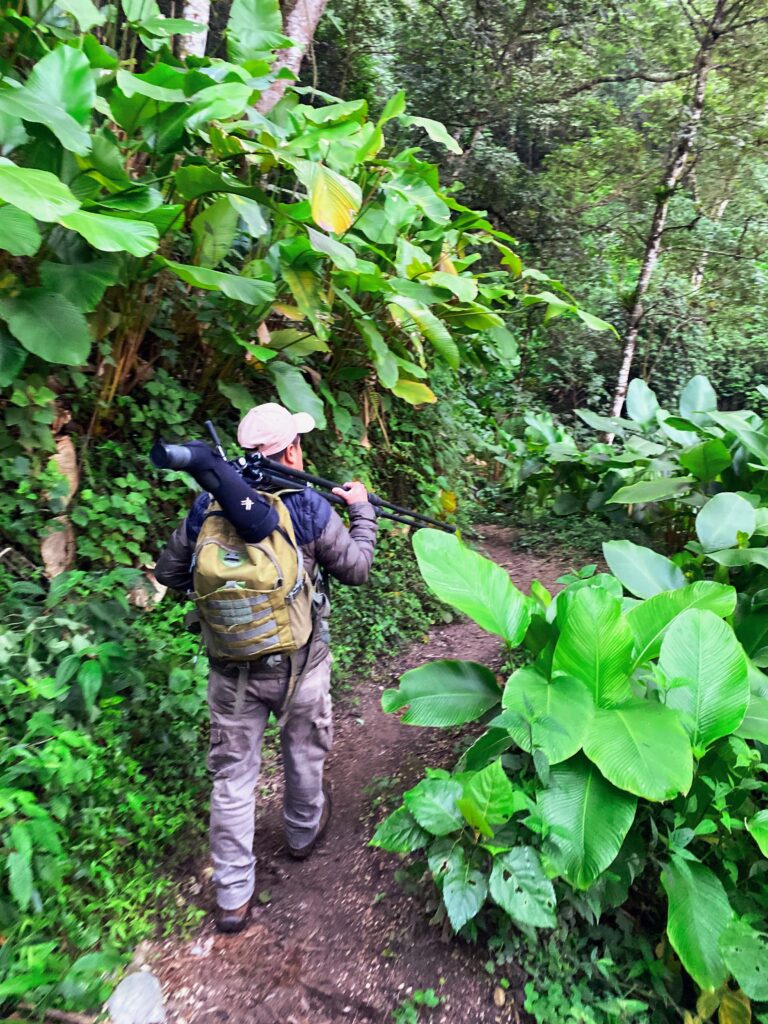

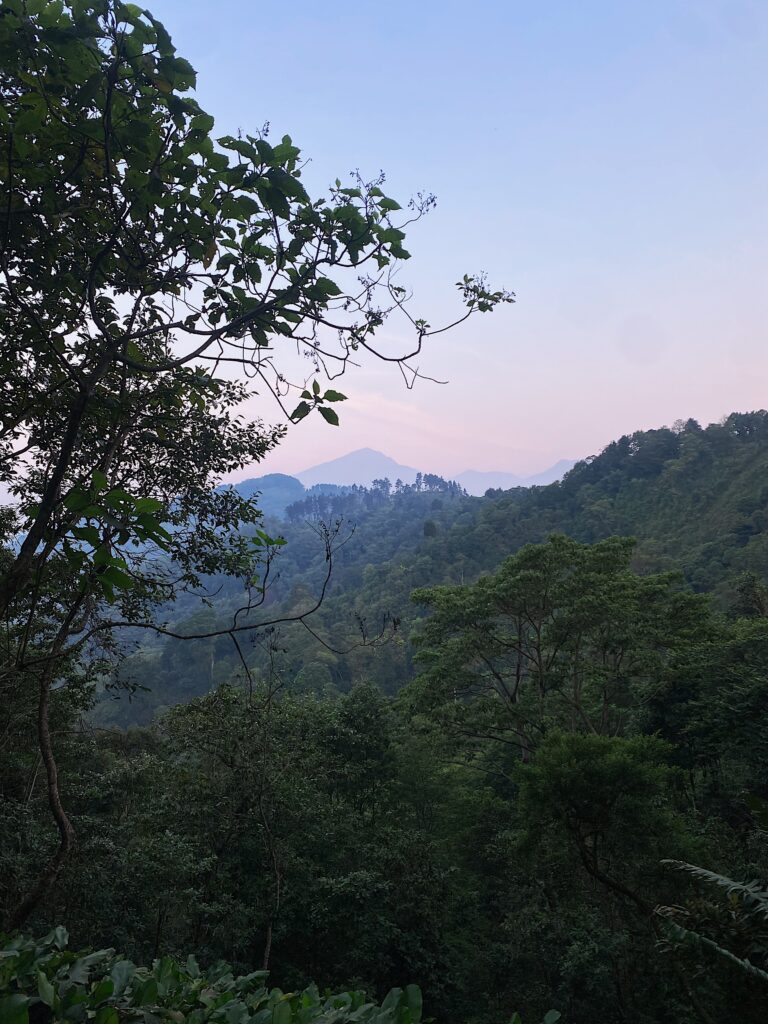
Tracking the Elusive Quetzal
We set off into the reserve just as the morning fog began to lift. The forest was quiet, with dewdrops clinging to the leaves. The air was cool and damp, and the sun was starting to poke through. Rolando explained that we were slightly off-season for peak Quetzal viewing. March through May is the breeding season. This is when birds are most active and vocal, making it the ideal time for finding quetzals in Guatemala. Despite it being the very end of May, my hope remained.
About an hour in, we’d already spotted a few impressive birds, Aracaris (a type of small toucan), Red-tailed Hawks, and several darting, small birds. Then we reached an open clearing with a tall tree featuring a deep cavity. (Rolando explained that Quetzals are cavity nesters, often moving into abandoned woodpecker holes to raise their young.
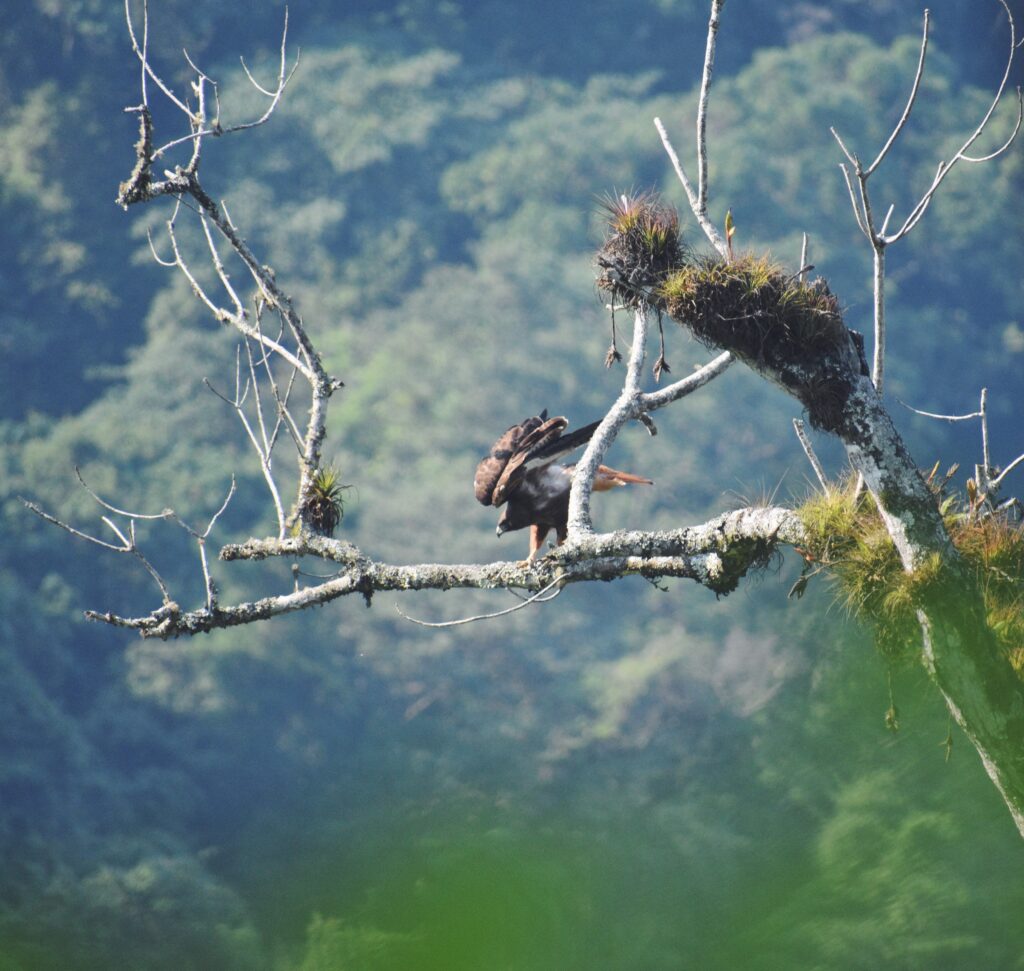
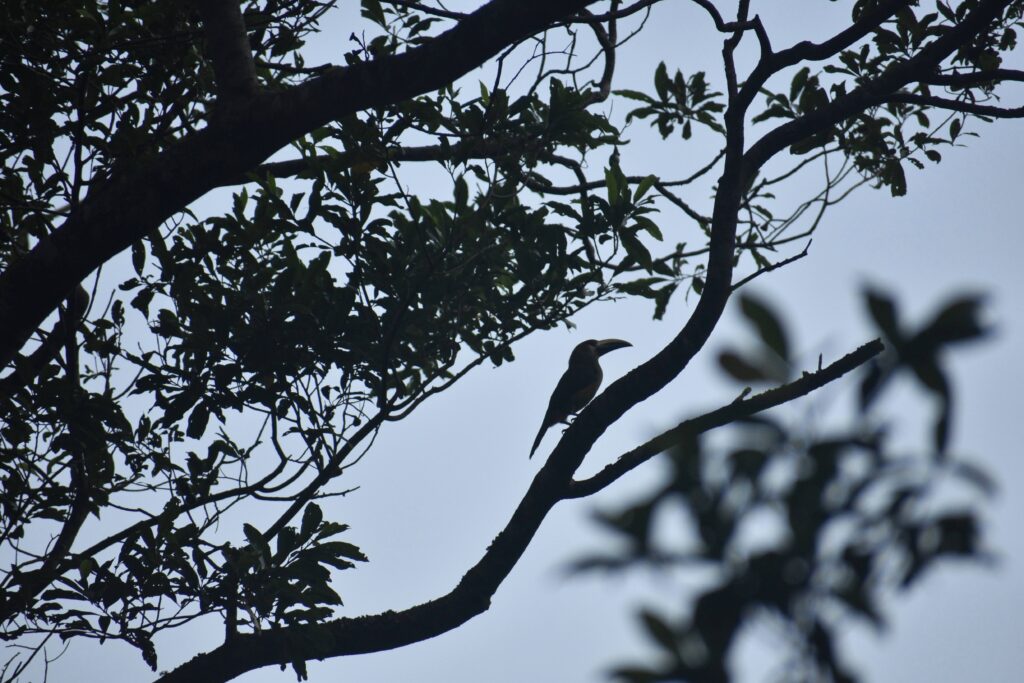
Where are the Quetzals???
We all quieted down as Rolando set up his scope and scanned the branches. Nothing. He tried a few more angles. Still nothing. Quetzals, it seemed, were not making things easy. While we collectively recalibrated our expectations and began digging into our trail snacks, a slight, glimmering green blur suddenly popped out of the tree cavity. It landed on a nearby branch, Quetzal!
It was a male quetzal, with its shimmering, emerald plumage, although he lacked the iridescent tail feathers that make male quetzals unmistakably clear. He had just emerged from a nearby nest cavity, likely to survey the area and keep an eye out for his mate, who was probably foraging nearby. In Quetzal pairs, both the male and female share nesting duties. They are monogamous during the breeding season and work together as a team to raise their young.
Quetzal Nesting Behavior
The female quetzal typically lays one to two pale blue eggs inside a tree cavity. Both parents take turns incubating the eggs, with the male often covering the night shift while the female incubates during the day. The incubation period lasts around 17 to 19 days. After hatching, both parents feed the chicks until they fledge, a process that usually occurs about three weeks later.
Male quetzals are especially striking during the breeding season, when their tail feathers can reach over two feet long, used to attract a mate and intimidate rival males. The females are more subtly colored, still beautiful but lacking the extravagant tail feathers, which makes them slightly more challenging to spot in the dense forest canopy.
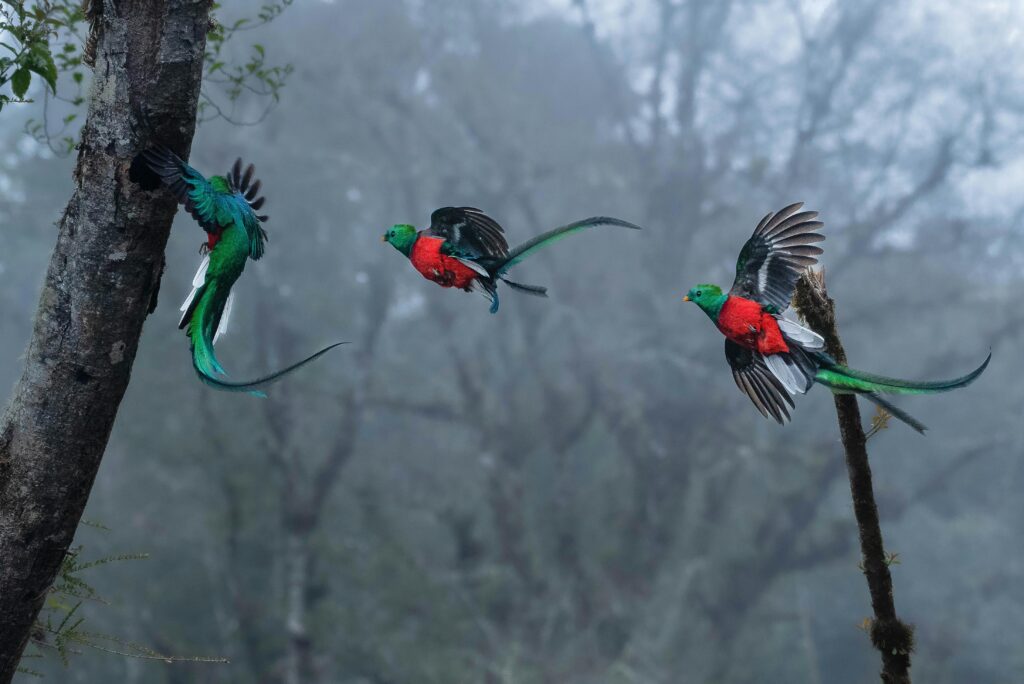
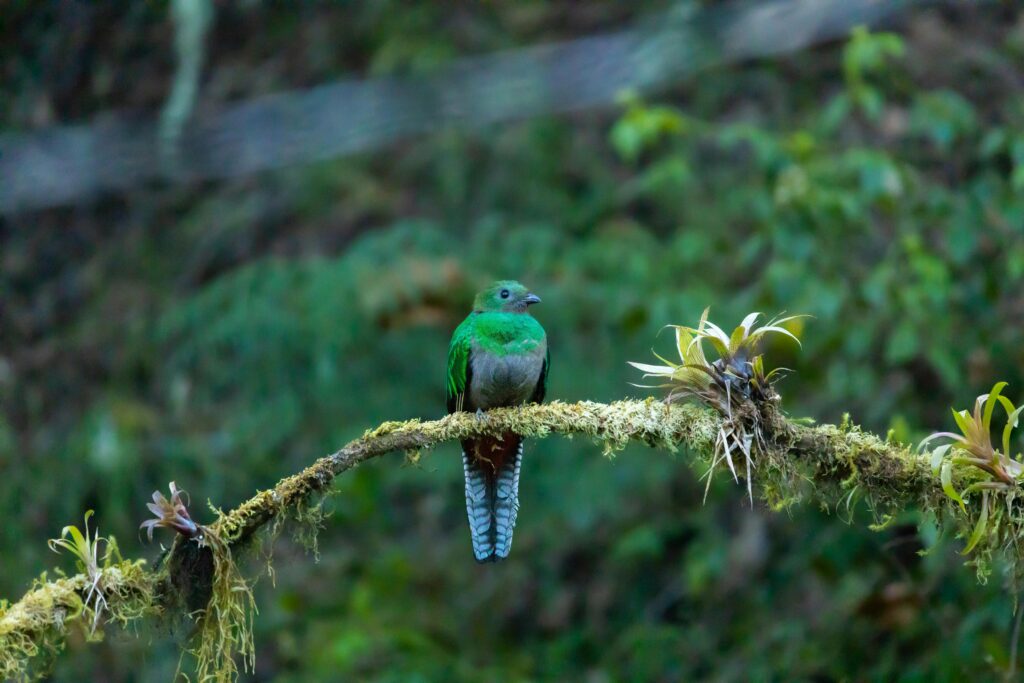
Photo credits: Jean Paul Montanaro via pexels & Jean Paul Montanaro via pexels
Watching this male emerge from the nest felt surreal. Just as quickly as he had appeared, he slipped back inside the cavity, likely returning to shield his fragile eggs or young from the outside world.
Feeling satisfied and a little relieved that I had completed my quest without spending hundreds of dollars in Guatemala on a failed mission, I assumed we’d begin making our way back. My mission of finding quetzals in Guatemala had been a success. Life goal completed.
But then, we heard a deep, resonant call echoing through the forest canopy from somewhere in the distance. Our guide immediately perked up. “That’s a courting call,” Ronaldo said, eyes wide. It was the distinctive vocalization of another male quetzal, trying to attract a mate with a series of low, melodious whistles.
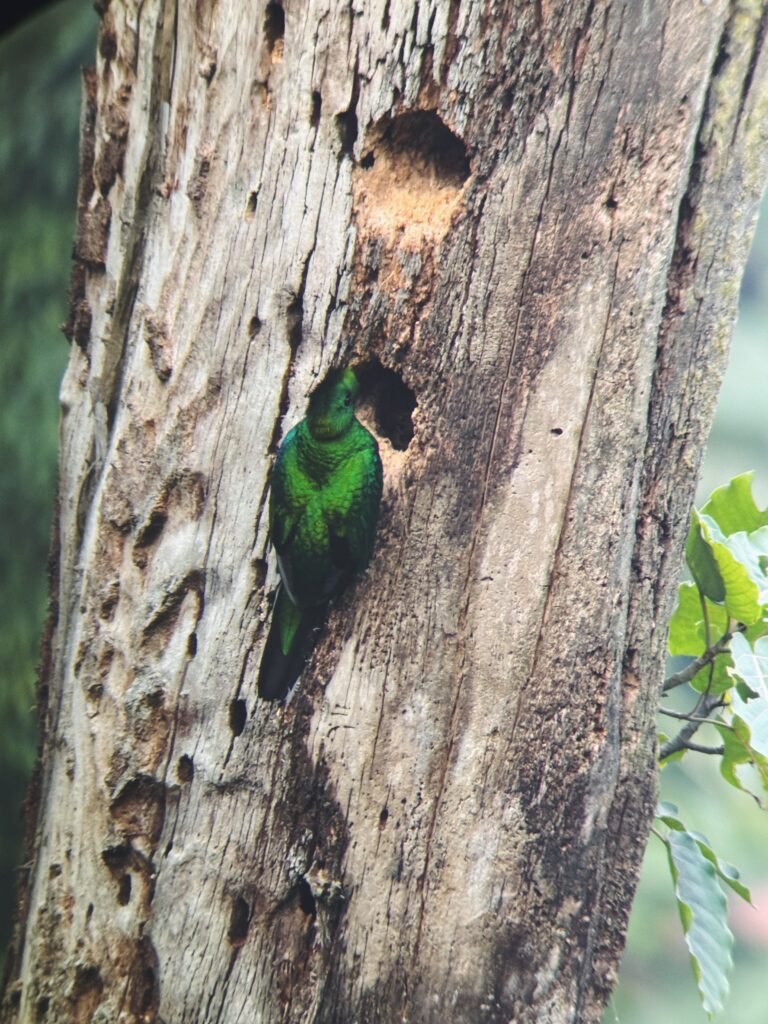
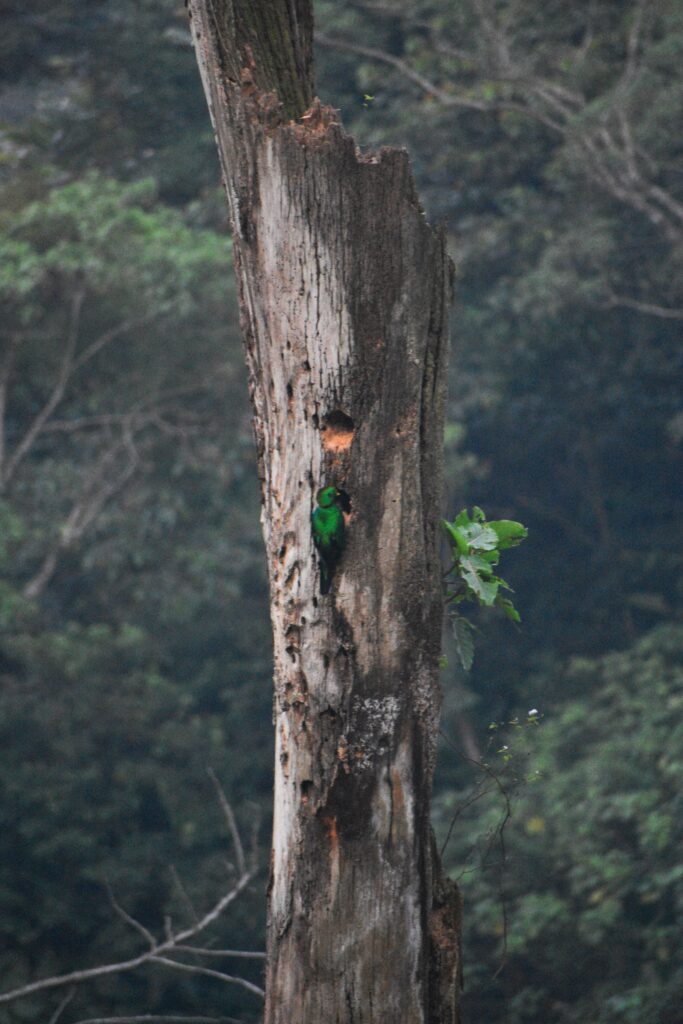
A Courtship Dance in the Canopy
Without warning, our guide, who was previously calm and composed, let out a gasp, nearly flattening one of the Dutch tourists, while sprinting headlong into the forest with the agility of someone whose entire career had led to this moment. We had no choice but to chase after him.
When we finally caught up, panting and drenched in sweat from the jungle humidity (definitely not because I am out of shape), he was frozen mid-step, binoculars raised, eyes locked on a patch of canopy about 20 feet up. Perched on a mossy branch was another male quetzal, this one even more flamboyant, with his full tail feathers swaying in the breeze.

We watched him perched in the tree for a few quiet minutes when the male suddenly burst into motion, flying back and forth between several trees and making a series of loud, melodic calls. He wasn’t just stretching his wings; he was putting on a show. Somewhere nearby, a female was watching.
Without hesitation, Ronaldo veered off-trail, following some invisible birding instinct, and we pushed through the underbrush behind him. Just as we caught up, the male quetzal did too, flying ahead of us. There she was, perched calmly on a branch, observing his every move.
Love Calls and Flamboyant Feathers
The female responded with a few soft vocalizations as the male circled the tree in a loose display flight. Their sexual dimorphism was apparent. While the male flaunted his iconic, shimmering green plumage, her muted colors helped her blend in better with the forest canopy, an evolutionary advantage during her nesting period.
This elaborate courtship ritual is typical of Resplendent Quetzals and is one of the breathtaking moments that make finding quetzals in Guatemala such an unforgettable experience. Males attract mates through both their appearance and their unique, flute-like calls. They often perform aerial displays, showcasing their vibrant plumage and agility in flight. Females evaluate their potential mates’ fitness and territory before pairing up for the season.
We stayed with the pair for about half an hour, watching their subtle interactions and soaking up every bit of the experience. Eventually, we decided it was time to head back. As we walked toward the truck, we felt content, grateful to have caught a glimpse of such an elusive and iconic bird in its natural habitat.
Back at the port, I looked out over the lake, camera packed away, already replaying the morning in my head. I had come to Guatemala chasing a long-time dream, and it had happened.
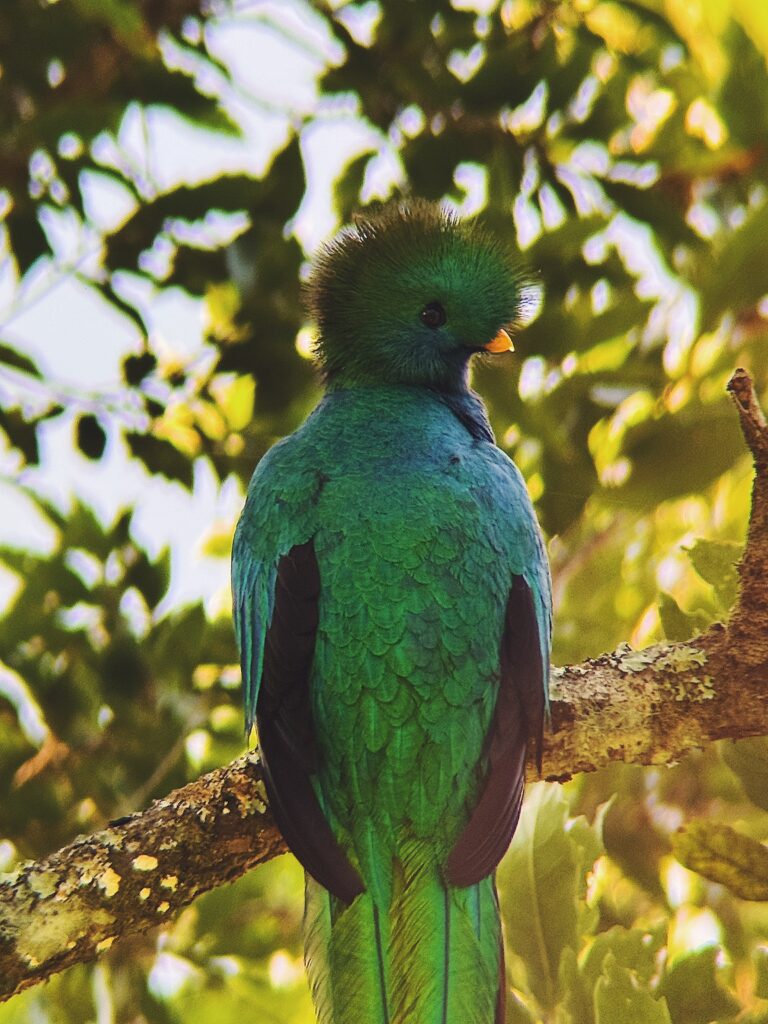
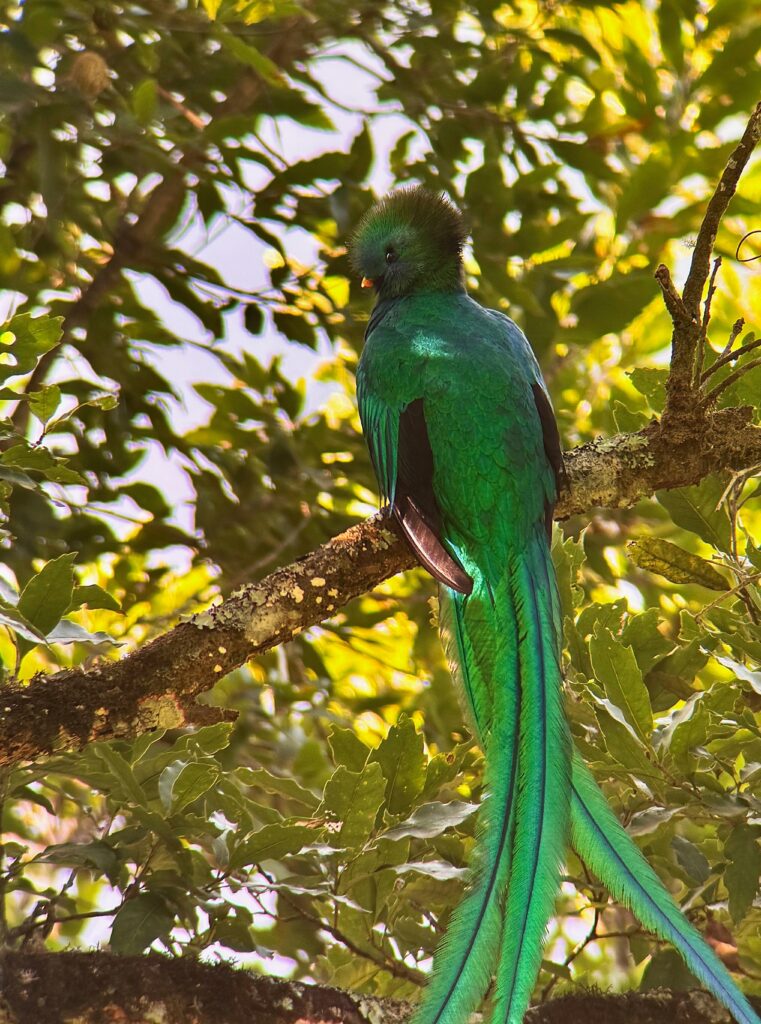
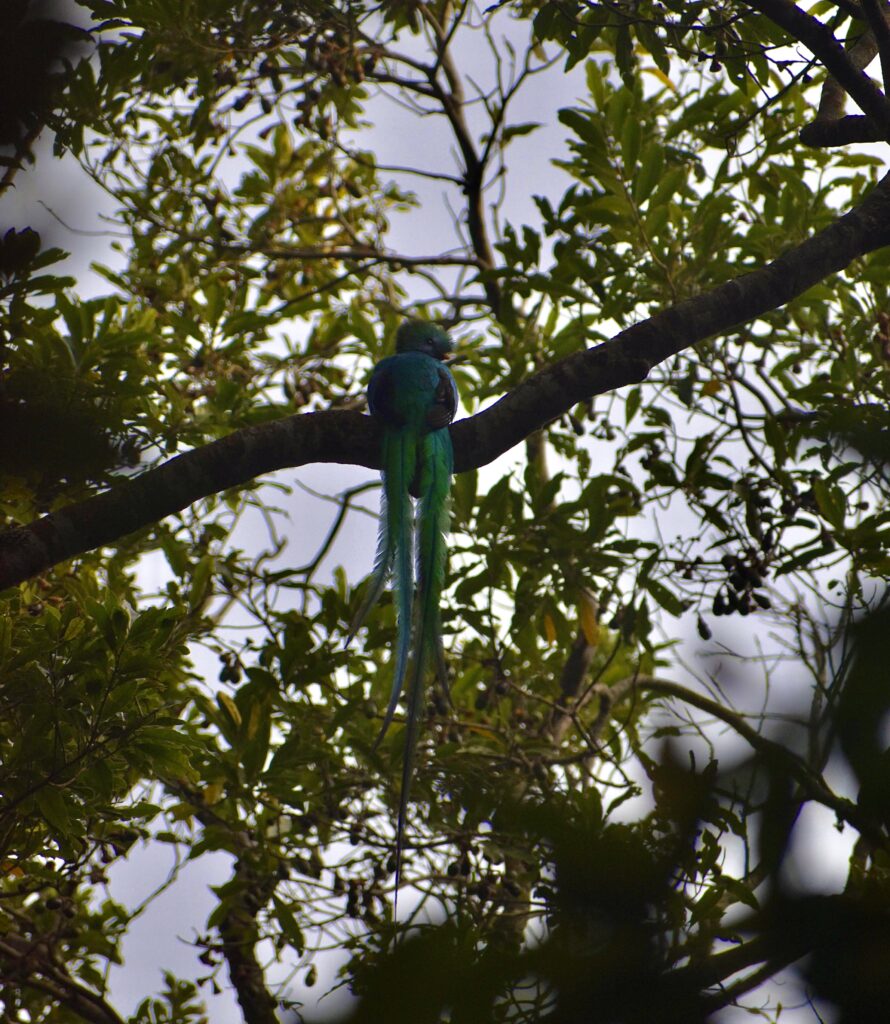
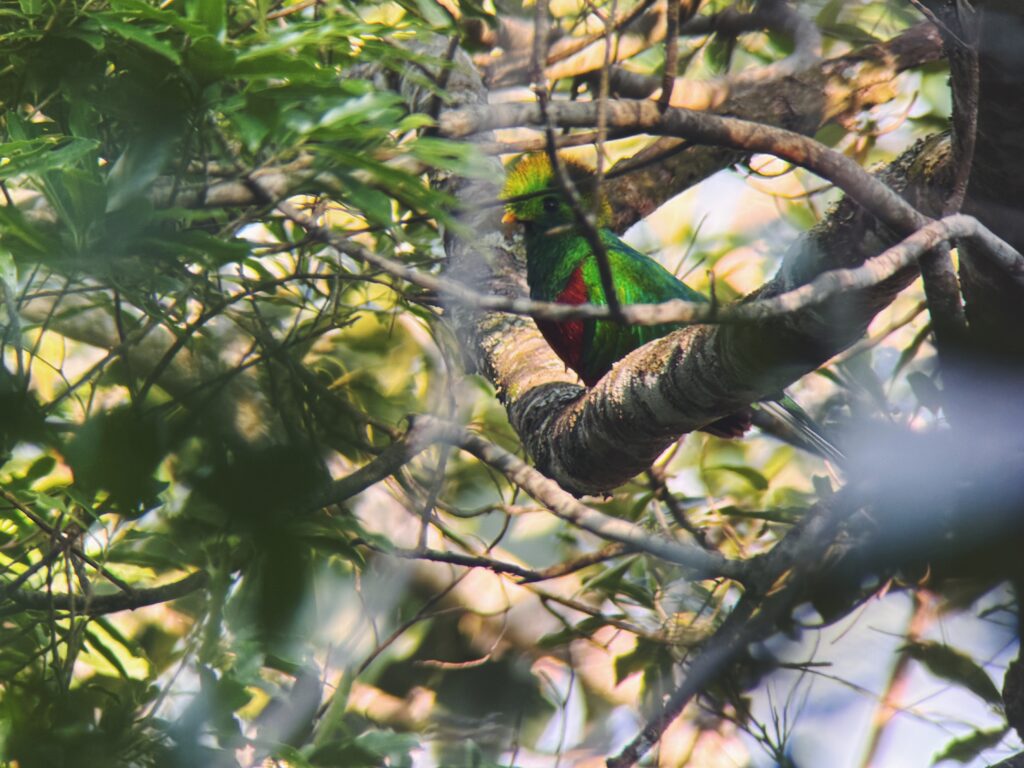
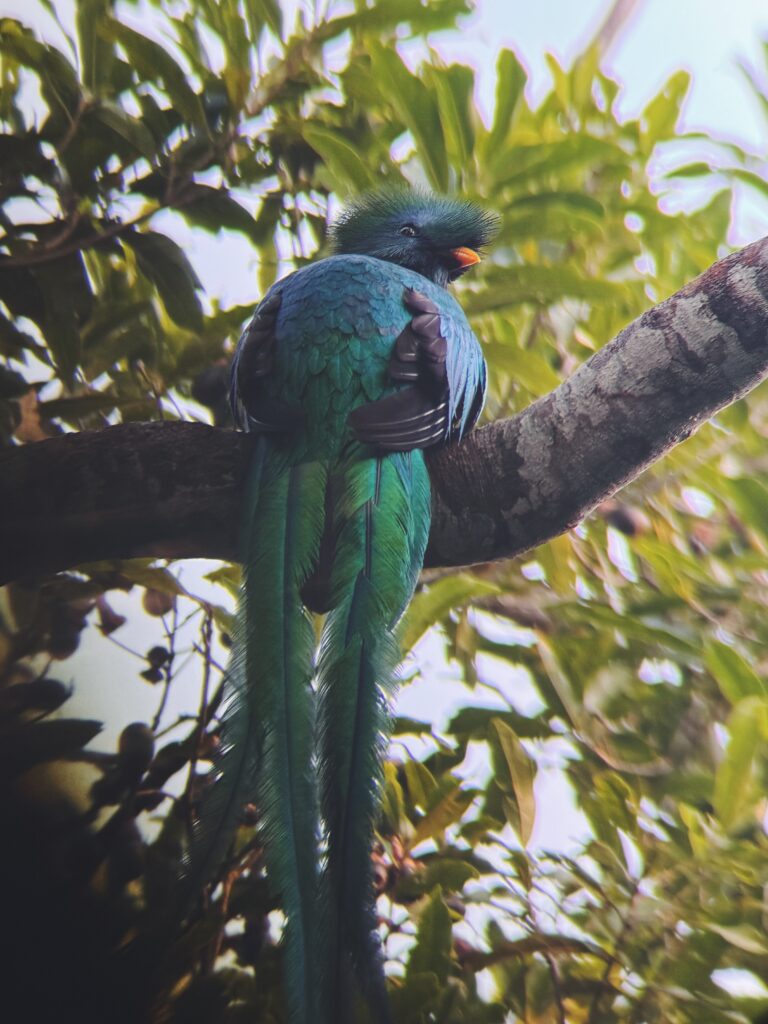
How You Can Help: Conservation in Action
Of course, seeing a Quetzal is only part of the story. Like many species that depend on fragile forest ecosystems, the Resplendent Quetzal faces growing threats. If you’re inspired to seek them out, too, there are ways to do so responsibly and help protect the species for future generations.
One of the most meaningful ways to travel responsibly and make your journey of finding quetzals in Guatemala even more impactful is by supporting locally led birding expeditions. These expeditions provide income for local communities and inspire on-the-ground conservation. Protected areas, such as the Biotopo del Quetzal, Sierra de las Minas, and Reserva Natural de Atitlán (also known as Rey Tepepul), play a crucial role in conservation. These parks rely on ecotourism funding to maintain and protect their forests.
Another impactful way to help is by supporting reforestation efforts. Many conservation programs collaborate with nearby communities to plant native tree species, especially wild avocados, a key food source for the Resplendent Quetzal. These reforested corridors reconnect fragmented habitats, giving quetzals and other wildlife the space they need to thrive.
Seeing a Resplendent Quetzal in the wild was a dream come true, but it was also a reminder of how fragile these moments are. The beauty of that encounter didn’t just come from the bird itself, but from everything that made it possible: protected forests, community-led conservation, and the people working behind the scenes to keep wild places wild. If you ever find yourself in Guatemala, chasing birds or simply wandering with curiosity, I hope you seek out experiences that support the land, its people, and the species that call it home. Ultimately, it’s not just about finding quetzals in Guatemala; it’s about protecting the forests that let them fly free.
My Recommendations For Finding Quetzals in Guatemala
Birding expedition company
Our guide, Rolando, was informative, engaging, and passionate about birds. He encourages and helps mentor many people in the community to become engaged with biding and ecotourism, and I highly recommend going with them on your birding expedition! He is an expert in the field, knowing exactly where to find quetzals and how to observe them.
Learn more about quetzal conservation

